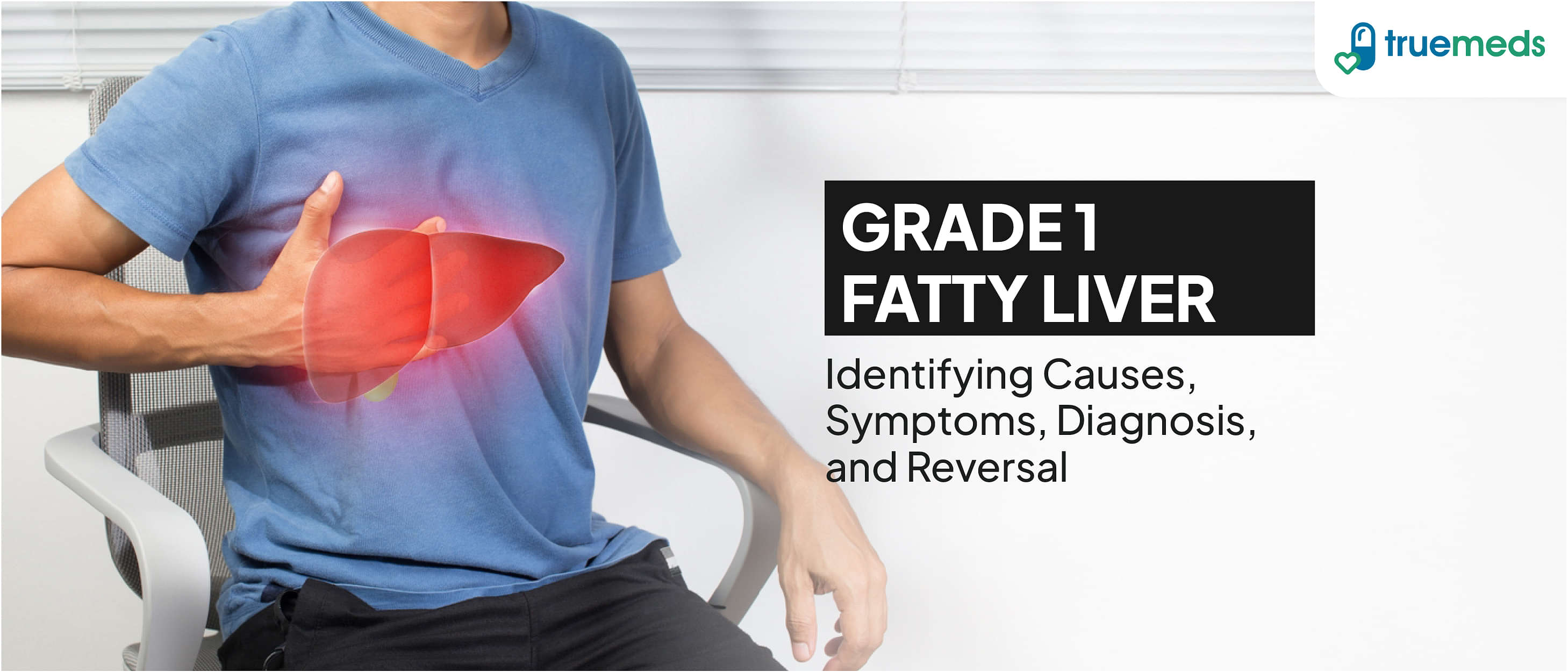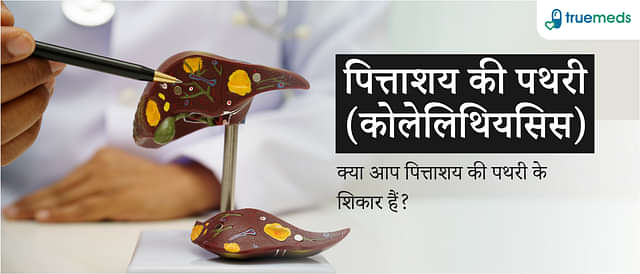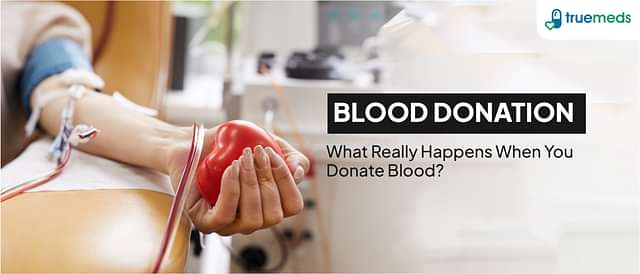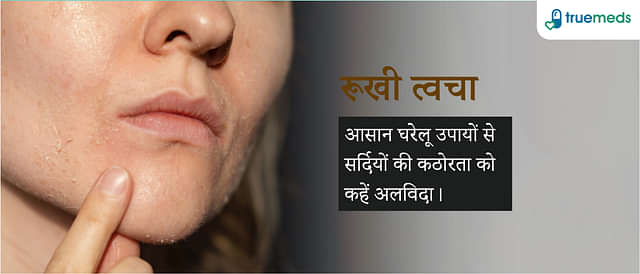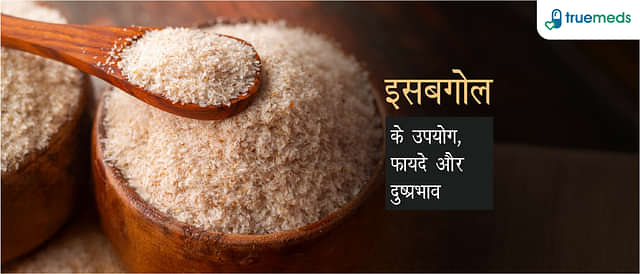Grade 1 Fatty Liver: Identifying Causes, Symptoms, Diagnosis, and Reversal
Last updated on : 13 Dec, 2024
Read time : 8 min
Introduction
Grade 1 fatty liver, often referred to as a mild fatty liver, is a condition characterised by the minimal accumulation of fat in your liver cells. In this stage, typically less than 33% of the liver’s weight is made up of fat. While this is the least severe stage of fatty liver disease, it’s important to address it at the earliest. Left untreated, grade 1 fatty liver can progress to more severe stages, such as grade 2 or 3, leading to significant damage to your liver and other complications, such as hepatomegaly with grade 1 fatty infiltration.
Signs and Symptoms of Grade 1 Fatty Liver
Most individuals with a grade 1 fatty liver may not exhibit any noticeable symptoms at all. However, some people may experience:
- Fatigue: Fatigue is a general sense of tiredness that isn’t necessarily linked to any physical activity.
- Discomfort in the upper right abdomen: This can occur due to the enlargement or inflammation of the liver.
When to See a Doctor?
Given that the symptoms of this condition can be rather subtle or even non-existent in some cases, knowing when to see a doctor can be tricky. It’s advisable to seek medical advice if you experience any of the symptoms mentioned above or if you have certain risk factors. These include:
- Obesity: Carrying excess body fat is a significant risk factor for developing fatty liver.
- Type 2 Diabetes or Insulin Resistance: Both of these conditions can exacerbate the accumulation of fat in your liver.
- High Blood Pressure and Cholesterol: These metabolic issues are often linked with fatty liver disease.
Causes of Grade 1 Fatty Liver
While the precise mechanisms are not entirely known, several factors have been associated with this condition:
- Obesity: Having excess body weight, especially around the abdomen, significantly increases the risk of developing a fatty liver.
- Insulin Resistance: Conditions like type 2 diabetes or prediabetes can increase the risk of fat accumulation in the liver.
- High Cholesterol and Triglycerides: High levels of these fats in your blood can contribute to fatty liver disease.
- Poor Dietary Habits: Eating a diet high in refined sugars, trans fats, and saturated fats can lead to fat building up in your liver.
- Sedentary Lifestyle: Lack of physical activities can contribute to obesity and, subsequently, to a fatty liver.
- Alcohol Consumption: Though grade 1 fatty liver is often classified as non-alcoholic fatty liver disease (NAFLD), excessive alcohol intake can also contribute to fat accumulation in the liver.
- Medications: Some medications, such as corticosteroids and certain cancer treatments, can lead to fatty liver.
- Rapid Weight Loss or Malnutrition: Sudden weight loss or inadequate nutrition can result in fat accumulation in the liver.
- Genetic Factors: Some rare genetic conditions, like Wilson’s disease, may predispose individuals to fatty liver disease.
Risk Factors for Grade 1 Fatty Liver
There are several factors that can increase your likelihood of developing a grade 1 fatty liver. These include:
- Obesity: Especially having a large amount of visceral fat around your abdomen.
- Metabolic Syndrome: This includes high blood pressure, high blood sugar levels, and abnormal cholesterol levels.
- Age: If you’re over 50 years old, your risk may increase.
- Sedentary lifestyle: A lack of regular exercise can contribute to obesity and metabolic issues, which in turn can lead to fatty liver.
- Diabetes: Both type 1 and type 2 diabetes are linked to fatty liver.
- High Cholesterol: High levels of cholesterol can lead to fat buildup in the liver.
- Smoking: Using tobacco is associated with a higher risk of liver disease.
- Family History: If you have a genetic predisposition to liver disease, this can also increase your risk.
Diagnosis of Grade 1 Fatty Liver
Here are some common diagnostic methods for grade 1 fatty liver:
- Ultrasound Imaging: This is a standard tool used to detect fat accumulation in the liver.
- Blood Tests: Doctors check your liver enzyme levels, as elevated levels may indicate liver disease. However, blood tests alone cannot confirm fatty liver.
- CT or MRI Scans: These imaging techniques may also be used to evaluate the fat content in your liver.
- Liver Biopsy: In some cases, doctors may perform a biopsy to determine the extent of liver damage.
Treatment of Grade 1 Fatty Liver
Here are some recommended treatment strategies for grade 1 fatty liver:
- Weight Management: Strive to achieve and maintain a healthy weight. Losing even 3-5% of your body weight can significantly reduce liver fat.
- Dietary Changes: A balanced diet rich in fruits, vegetables, whole grains, and healthy fats can help improve your liver health. Try to limit processed foods, sugars, and saturated fats.
- Regular Exercise: Regular physical activity, such as aerobic exercises and strength training, can enhance insulin sensitivity and promote weight loss.
- Limiting Alcohol Intake: Alcohol can exacerbate liver damage, so reducing or eliminating its consumption is essential.
- Managing Underlying Conditions: If you have conditions such as diabetes, high blood pressure, and high cholesterol, managing these effectively is important in preventing further liver damage.
Prevention and Reversal Strategies of Grade 1 Fatty Liver
Beyond treatment, taking steps to prevent the progression of grade 1 fatty liver is crucial. Here are some steps:
- Healthy Weight Maintenance: Keeping a healthy weight through diet and exercise is the best way to prevent fatty liver disease.
- Balanced Diet: Follow a diet low in refined carbohydrates and high in fibre that can help maintain your liver health.
- Regular Physical Activity: Aim for at least 150 minutes of moderate-intensity exercise each week.
- Avoiding Toxins: Limit your exposure to environmental toxins and avoid unnecessary medications to support liver health.
- Routine Health Check-ups: Regular medical check-ups can help monitor your liver health and detect any early signs of progression.
Complications of Grade 1 Fatty Liver
If left untreated, grade 1 fatty liver can progress to more severe forms of liver disease, leading to several potential complications.
- Progression to Higher Grades: Without intervention, fatty liver can progress to grade 2 or 3, characterised by inflammation and liver damage.
- Cirrhosis: Chronic inflammation can lead to scarring of the liver (cirrhosis), which can severely impair liver function.
- Liver Failure: In advanced cases, the liver may fail to perform its essential functions— a life-threatening situation.
- Increased Risk of Liver Cancer: Although grade 1 fatty liver isn’t directly linked to liver cancer, progression to more severe liver disease does increase the risk.
- Metabolic Complications: Fatty liver disease can increase the risk of developing cardiovascular diseases and other metabolic disorders.
Research Facts About Grade 1 Fatty Liver
Here are some fascinating research-backed facts about grade 1 fatty liver:
- Studies have demonstrated that even a modest weight reduction of 7-10% can result in a significant decrease in liver fat and an overall improvement in liver health.
- A Mediterranean diet, rich in fruits, vegetables, whole grains, and healthy fats, has been found to reduce liver fat and enhance liver function.
- Modern medical technology, such as the FibroScan, an elastography test, can measure the stiffness of the liver to assess fibrosis. This test can be used to monitor changes in liver health over time for patients with Grade 1 fatty liver.
Conclusion
Grade 1 fatty liver, also known as mild fatty liver or hepatomegaly with grade 1 fatty infiltration, represents the mildest form of fatty liver disease, characterised by minimal accumulation of fat in the liver. Although it usually doesn’t lead to significant symptoms or damage, it’s essential to address this condition early on via lifestyle modifications to prevent its progression to severe stages. This involves maintaining a healthy weight, adopting a balanced diet, and engaging in regular physical activity. It’s vital to be aware of the risk factors and potential complications associated with grade 1 fatty liver for effective management and long-term liver health. Early detection combined with proactive lifestyle shifts can significantly improve outcomes and evade serious liver-related complications.
FAQs
Yes, fatty liver grade 1 can often be reversed with lifestyle changes such as a balanced diet, regular exercise, and weight loss. Consult a doctor for personalised guidance.
Grade 1 fatty liver often has no symptoms. If present, they might include fatigue, mild abdominal discomfort, or vague digestive issues. Regular check-ups are crucial for early detection and management.
Yes, a fatty liver diagnosis can often be reversed with lifestyle changes like a healthy diet, regular exercise, and weight loss. Early intervention is key for successful management and reversal.
Fatty liver is most effectively reversible in the early stages, particularly in grade 1. As it progresses to more severe stages, like non-alcoholic steatosis or cirrhosis, reversal becomes more challenging.
Disclaimer
Our healthcare experts have carefully reviewed and compiled the information presented here to ensure accuracy and trustworthiness. It is important to note that this information serves as a general overview of the topic and is for informational purposes only. It is not intended to diagnose, prevent, or cure any health problem. This page does not establish a doctor-patient relationship, nor does it replace the advice or consultation of a registered medical practitioner. We recommend seeking guidance from your registered medical practitioner for any questions or concerns regarding your medical condition.
Popular Articles
Recommended Articles
Recent Articles
Top-Selling Medicines:
...View more
Top-Selling OTC:
...View more
Subscribe
Registered Office Address
Grievance Officer
Download Truemeds

Contact Us
Our customer representative team is available 7 days a week from 9 am - 9 pm.
v3.7.5
Our Payment Partners









